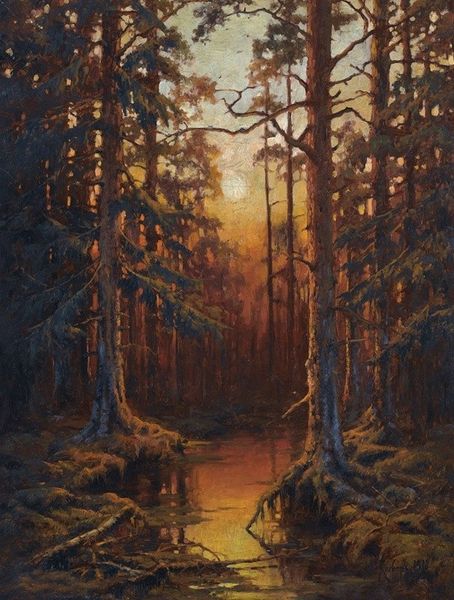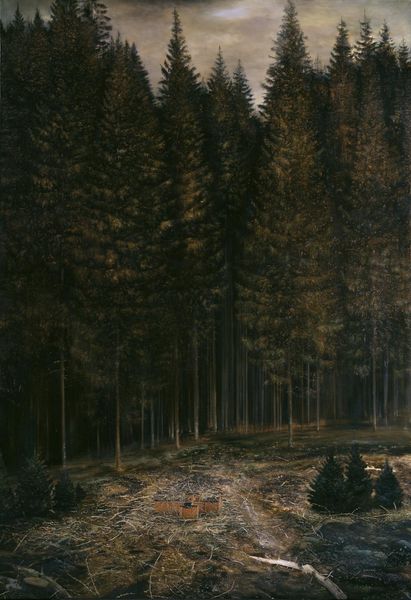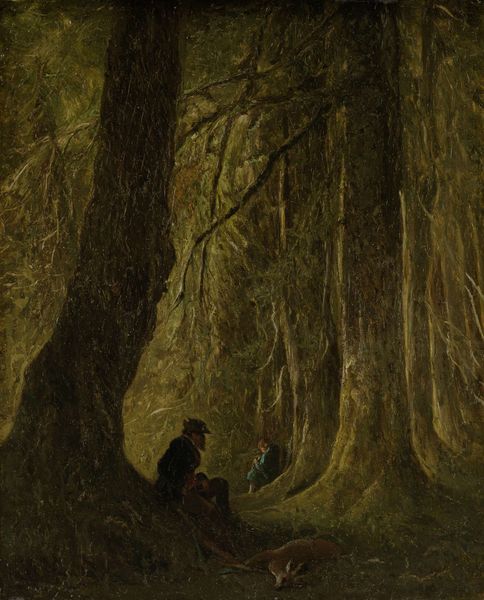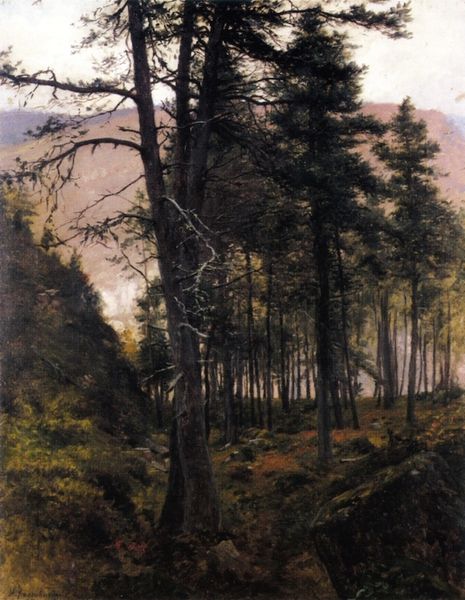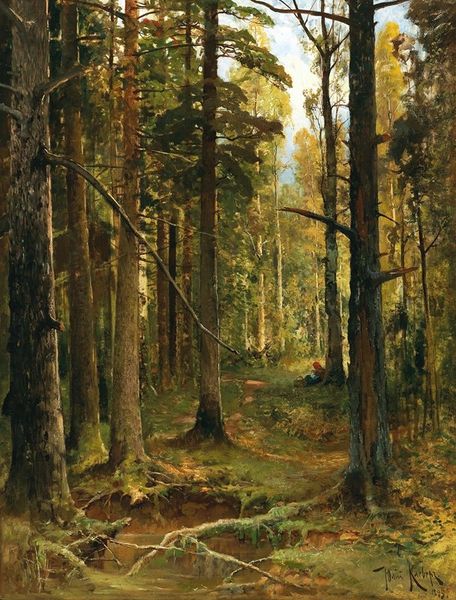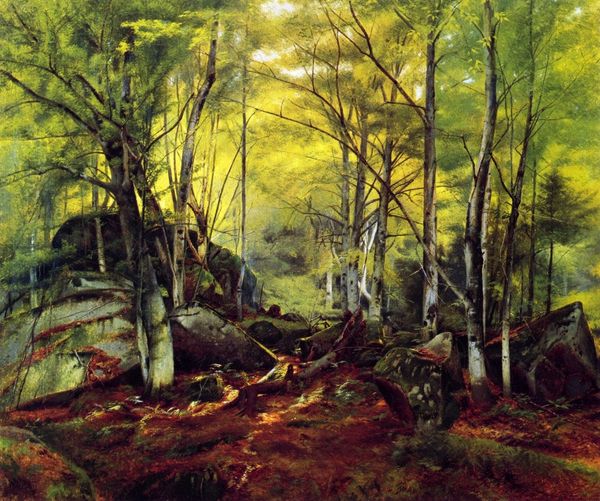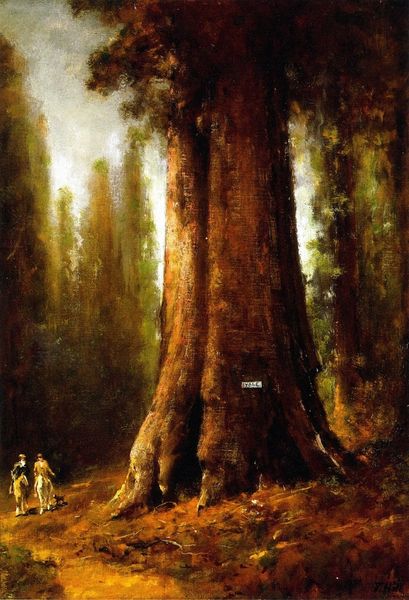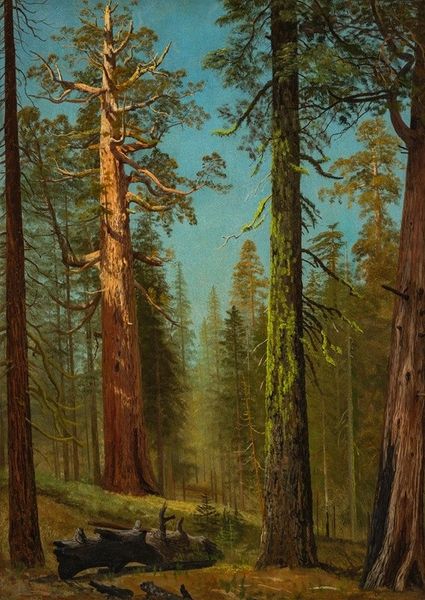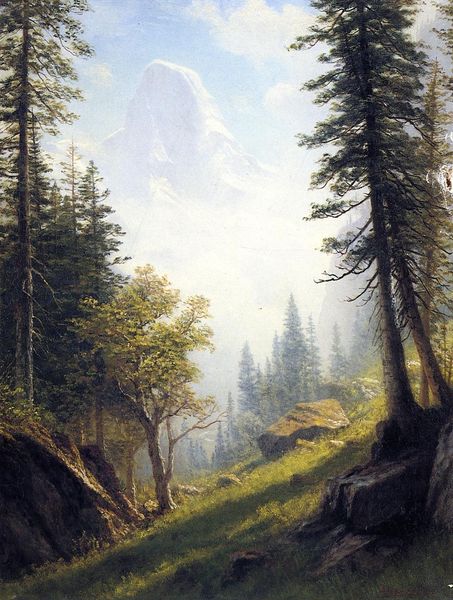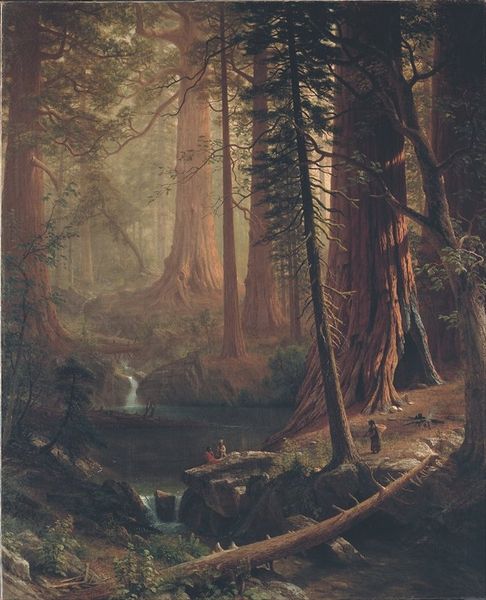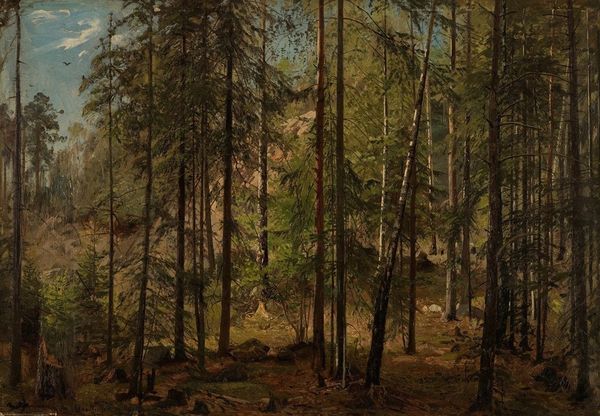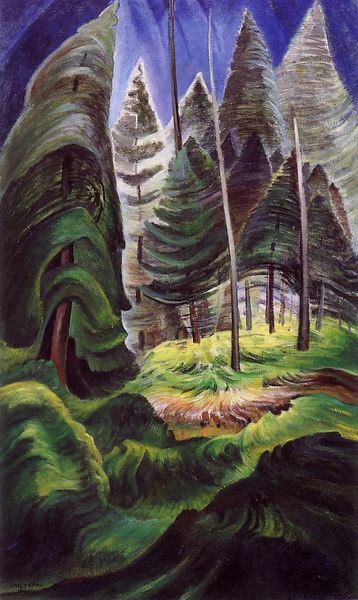
Dimensions: 77 × 51 1/8 in. (195.5 × 130 cm)
Copyright: Public Domain
Editor: So, this is Gustave Doré's "Alpine Scene," painted in 1865, using oil on canvas. It’s at the Art Institute of Chicago. The way the light filters through the towering trees…it almost feels oppressive, doesn’t it? Like nature is this powerful, almost indifferent force. What do you see in this piece? Curator: I see a pointed commentary on the relationship between humanity and nature, filtered through the lens of 19th-century industrialization. Look how tiny the figures are compared to the scale of the forest. It’s Romanticism, yes, but Doré also hints at the anxieties of a society rapidly transforming. He captures how the traditional understanding of nature as divine and all-encompassing now collided with ideas of control and resources to be managed. What roles are they playing here? Who belongs, or who owns this landscape? Editor: I never thought about ownership… the figures almost seem like trespassers. It is really subtle, because this could simply appear as people taking a hike. It seems less idyllic now and more fraught with the unease of societal encroachment on something ancient and immense. Curator: Exactly! The small stream cuts through the landscape, a parallel with the exploitation of natural resources for new modes of production and transportation that characterized Doré’s era. His other works similarly touch on urban inequality, and I believe he implicitly references them here through these subtle markers of displacement. Editor: Wow. So it is more than just trees and mountains, right? It’s Doré using landscape to reflect the human condition. Curator: Precisely! Art as an agent for cultural critique. Editor: That’s changed how I’ll look at landscape paintings from now on! Thanks for the insight!
Comments
No comments
Be the first to comment and join the conversation on the ultimate creative platform.
